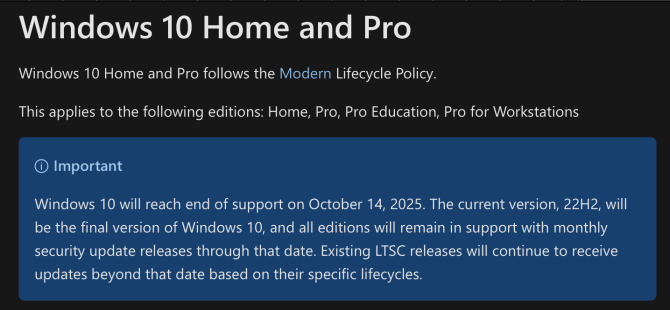Tens of millions of users will have to upgrade as one of Microsoft’s most beloved operating systems approaches its end of life.
With over 70% of the market, Windows 10 is currently the company’s most popular operating system. However, it is about to be discontinued as Microsoft has set Oct. 14, 2025, as its end-of-life date. If Microsoft sticks to this, analysts predict we will likely see one of the largest forced upgrades in history, with up to 240 million computers being tossed into a landfill. Windows 10 will likely go down in the annals of history as one of Microsoft’s most beloved operating systems, right up there with Windows XP.
We have covered this extensively in the past, as Microsoft’s newest OS is not compatible with CPUs that are only a few years old due to the required TPM 2.0 module and late-model 64-bit processor. Industry research firm Canalys has written a report on the upcoming euthanasia of Windows 10, which ITPro flagged. The report raises questions about Microsoft’s policies when it comes to software lifecycles. It notes that many people are ineligible to upgrade to Windows 11.

In addition to the unnecessary waste this event could create, the report states that over 240 million computers that are still viable and in good working condition could be prematurely disposed of; since they lack the necessary hardware for a newer OS, they will have no market value and cannot be refurbished and resold. Putting the number of computers headed towards this fate in perspective, it would be equivalent to a stack of laptops over 600 km taller than the moon.
However, Redmund has apparently seen the writing on the wall because just this month, it announced that it would extend security updates for Windows 10 by three years, taking it into 2028. The catch is that these updates will not be free, though Microsoft has yet to announce pricing. Microsoft has already put Windows 10 into stasis, with the OS no longer receiving any major updates going forward, so the current version is final. The report notes that no current legislative body controls the device lifecycle process, so it is up to Microsoft, and it can do whatever it thinks is prudent.
As per an October report, 400 million people are using Windows 10, so it appears that Microsoft is working to find a way out of this mess. Making users pay for security updates may also prove to be unfeasible, as the cost may be too high for millions of users to afford. The report also mentions that Windows 7 offered a similar scheme, but that eventually ballooned to $100 a year for one PC for updates. If Microsoft does that again, most people will upgrade to a less expensive Windows 11 machine, which brings us back to the original issue of millions of functional computers becoming e-waste.

